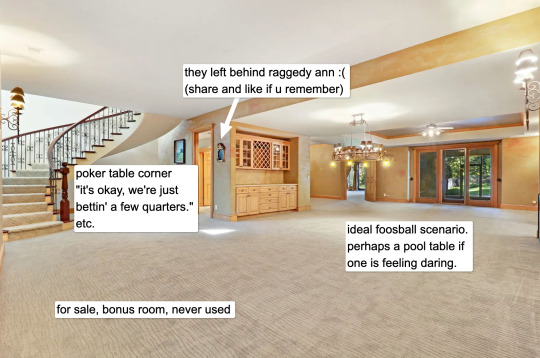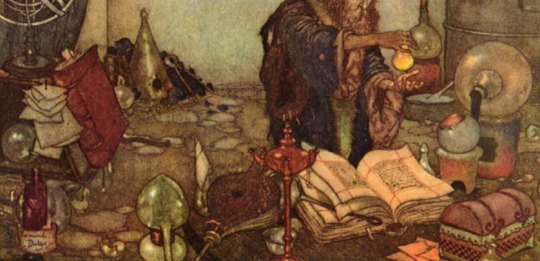#demarcation problems
Explore tagged Tumblr posts
Text
The reason nobody can agree where the boundary between "visual novel" and "adventure game" lies is because the term "adventure game" originated in the American gaming industry and was later loaned into Japanese, while the term "visual novel" originated in the Japanese gaming industry and was later loaned into English, but the meanings shifted in both cases, so the American gaming industry uses "visual novel" to mean something different from what it means in Japan and the Japanese gaming industry uses "adventure game" to mean something different from what it means in America, and now we've got two terms with (at least) four separate definitions between them, but nerds on the Internet who don't understand how loan-words work keep trying to directly compare them without taking into account that there are multiple only partially compatible cultural idioms in play.
#gaming#video games#adventure games#visual novels#genres#taxonomy#demarcation problems#arrant pedantry
2K notes
·
View notes
Text
literally don't know how to express anything without being a huge bitch for some reason. i try to be concise, i'm abrasive. i try to explain, i'm condescending. i say nothing, i'm passive-agressive and people try to make me spit it out. christ.
#so cool the problem isn't even a situation it's just like the way i act all the time i guess#cool great#extremely minute thing that is super easy to identify and demarcate#let alone change#broadcasting my misery#vent
6 notes
·
View notes
Text

god forbid (literally) someone not want to submit to god
3 notes
·
View notes
Text
ode to a faux grecian urn
Howdy everyone,
Today's house, built in 2001, comes to you from, you guessed it, the Chicago suburbs. The house is a testimony to traditional craftsmanship and traditional values (having lots of money.) The cost of painting this house greige is approximately the GDP of Slovenia so the owners have decided to keep it period perfect (beige.) Anyway.

This 5 bedroom, 7.5 bathroom house clocks in at a completely reasonable 12,700 square feet. If you like hulking masses and all-tile interiors, it could be all yours for the reasonable price of $2.65 million.

The problem with having a house that is 12,700 square feet is that they have to go somewhere. At least 500 of them were devoted to this foyer. Despite the size, I consider this a rather cold and lackluster welcome. Cold feet anyone?

The theme of this house is, vaguely, "old stuff." Kind of like if Chuck E Cheese did the sets for Spartacus. Why the dining room is on a platform is a good question. The answer: the American mind desires clearly demarcated space, which, sadly, is verboten in our culture.

The other problem with a 12,700 square foot house is that even huge furniture looks tiny in it.

Entering cheat codes in "Kitchen Building Sim 2000" because I spent my entire $70,000 budget on the island.

Of course, a second sitting room (without television) is warranted. Personally, speaking, I'm team Prince.

I wonder why rich people do this. Surely they must know it's tacky right? That it's giving Liberace? (Ask your parents, kids.) That it's giving Art.com 75% off sale if you enter the code ROMANEMPIRE.

Something about the bathroom really just says "You know what, I give up. Who cares?" But this is not even the worst part of the bathroom...

Not gonna lie, this activates my flight or fight response.

If you remember Raggedy Ann you should probably schedule your first colonoscopy.
Anyways, that does it for the interior. Let's take a nice peek at what's out back.

I love mowing in a line. I love monomaniacal tasks that are lethal to gophers.
Alright, that does it for this edition of McMansion Hell. Back to the book mines for me. Bonus posts up on Patreon soon.
If you like this post and want more like it, support McMansion Hell on Patreon for as little as $1/month for access to great bonus content including a discord server, extra posts, and livestreams.
Not into recurring payments? Try the tip jar! Student loans just started back up!
#architecture#design#mcmansion#mcmansions#ugly houses#interior design#bad architecture#mcmansion hell#illinois#2000s
5K notes
·
View notes
Text
Demarcating Science: Criteria for Distinguishing Science from Pseudoscience
The demarcation problem, which is the challenge of distinguishing science from pseudoscience or non-science, has been a topic of debate among philosophers of science for many years. There is no one-size-fits-all solution to this problem, but several proposed criteria and approaches have been suggested over time. Here are some potential solutions and criteria for addressing the demarcation problem:
Falsifiability (Karl Popper): According to Karl Popper, a scientific theory should be considered scientific if it is falsifiable. This means that for a theory to be scientific, there must be a way to test it empirically, and in principle, it should be possible to find evidence that could potentially refute or falsify the theory. If a theory is not falsifiable, it falls outside the realm of science.
Empirical Evidence: Another criterion for demarcating science from pseudoscience is the reliance on empirical evidence. Scientific claims should be based on empirical observations, experimentation, and data. If a purported scientific theory lacks empirical support and relies primarily on anecdotal evidence or testimonials, it may be considered pseudoscientific.
Predictive Power: Scientific theories often have predictive power. They can make testable predictions about future observations or experiments. The ability of a theory to make accurate and successful predictions can be seen as a hallmark of scientific validity.
Methodological Rigor: Science typically adheres to well-established and rigorous methods of inquiry, including the scientific method. The presence of systematic and well-documented research methods, peer review processes, and a commitment to critical evaluation can help distinguish science from non-science.
Progressive Research Program (Imre Lakatos): Imre Lakatos proposed a demarcation criterion based on research programs. He argued that scientific research programs should be judged by their ability to generate novel research questions and solutions. A scientific program that continually generates new questions and adapts to new evidence is considered progressive.
Consensus and Peer Review: Consensus among scientists and peer review processes can be used as indicators of scientific validity. Scientific claims that have withstood scrutiny, debate, and rigorous evaluation by experts in the field are more likely to be considered scientific.
Naturalism: Some philosophers argue for naturalism as a criterion, suggesting that scientific theories should be rooted in natural causes and explanations. Any theories invoking supernatural or unobservable entities may be considered pseudoscientific.
Historical Precedent: Examining historical cases of scientific advancement and the criteria used by scientists in the past to distinguish science from pseudoscience can provide insights into demarcation.
It's important to note that these criteria are not always clear-cut, and there may be gray areas where it is challenging to make definitive judgments. Additionally, some philosophers argue that the demarcation problem may not have a single, universal solution and that it may vary depending on the context and the specific scientific discipline under consideration. As a result, the demarcation problem remains a subject of ongoing debate and discussion in the philosophy of science.
#philosophy#ontology#epistemology#metaphysics#knowledge#learning#education#chatgpt#Demarcation Problem#Karl Popper#Philosophy of Science#Scientific Method#Falsifiability#Empirical Evidence#Predictive Power#Methodological Rigor#Imre Lakatos#Peer Review#Naturalism in Science#Philosophy of Scientific Inquiry#Pseudoscience#Scientific Criteria#Progress in Science
0 notes
Text
one reason (white) queer people misuse the term homonationalism is that they see queerness (or whatever you want to call it) as naturally disaffiliated with the US empire. so they understand homonationalism as a divergence from a natural mutual antagonism between queerness and empire. they talk about homonationalism as if it's an exclusively "normie gay" project, and as if it's a divergence from, rather than a consequence of, the overall trajectory of western lgbtqia+ politics. ironically it’s that self-exceptionalization by the queer, on the basis of their queerness, that imbricates them in homonationalism. they produce themselves as a homonationalist subject, and reproduce homonationalism, every time they articulate their queerness as individualized freedom. and Puar actually anticipates all of this in her original theorization of homonationalism in Terrorist Assemblages, and that's why it really helps to go to the text instead of osmosing queer theory solely through tumblr posts (esp when tumblr is so white and the queer theorists are not): "Some may strenuously object to the suggestion that queer identities, like their 'less radical' counterparts, homosexual, gay, and lesbian identities, are also implicated in ascendant white American nationalist formations, preferring to see queerness as singularly transgressive of identity norms. This focus on transgression, however, is precisely the term by which queerness narrates its own sexual exceptionalism.
While we can point to the obvious problems with the emancipatory, missionary pulses of certain (U.S., western) feminisms and of gay and lesbian liberation, queerness has its own exceptionalist desires: exceptionalism is a founding impulse, indeed the very core of a queerness that claims itself as an anti-, trans-, or unidentity. The paradigm of gay liberation and emancipation has produced all sorts of troubling narratives: about the greater homophobia of immigrant communities and communities of color, about the stricter family values and mores in these communities, about a certain prerequisite migration from home, about coming-out teleologies. We have less understanding of queerness as a biopolitical project, one that both parallels and intersects with that of multiculturalism, the ascendancy of whiteness, and may collude with or collapse into liberationist paradigms. While liberal underpinnings serve to constantly recenter the normative gay or lesbian subject as exclusively liberatory, these same tendencies labor to insistently recenter the normative queer subject as an exclusively transgressive one. Queerness here is the modality through which 'freedom from norms' becomes a regulatory queer ideal that demarcates the ideal queer. ... I am thinking of queerness as exceptional in a way that is wedded to individualism and the rational, liberal humanist subject, what [Sara] Ahmed denotes as 'attachments' and what I would qualify as deep psychic registers of investment that we often cannot account for and are sometimes best seen by others rather than ourselves. 'Freedom from norms' resonates with liberal humanism’s authorization of the fully self-possessed speaking subject, untethered by hegemony or false consciousness, enabled by the life/stylization offerings of capitalism, rationally choosing modern individualism over the ensnaring bonds of family. In this problematic definition of queerness, individual agency is legible only as resistance to norms rather than complicity with them, thus equating resistance and agency.
... Queerness as automatically and inherently transgressive enacts specific forms of disciplining and control, erecting celebratory queer liberal subjects folded into life (queerness as subject) against the sexually pathological and deviant populations targeted for death (queerness as population). Within that orientation of regulatory transgression, queer operates as an alibi for complicity with all sorts of other identity norms, such as nation, race, class, and gender, unwittingly lured onto the ascent toward whiteness. ... To be excused from a critique of one’s own power manipulations is the appeal of white liberalism, the underpinnings of the ascendancy of whiteness, which is not a conservative, racist formation bent on extermination, but rather an insidious liberal one proffering an innocuous inclusion into life."
Jasbir K. Puar, Terrorist Assemblages: Homonationalism in Queer Times (2007)
1K notes
·
View notes
Note
Is mbti pseudoscience ? Also what makes a term pseudoscience ? Is it the people involved? Lack of empirical evidence? Inability to replicate the results?
this is called the demarcation problem and philosophers of science have not settled it. i find this debate trite because it's generally framed around ahistorical, apolitical, asocial notions of 'science' as a set of disembodied ideas rather than as a family of knowledge practices occurring and evaluated in specific social contexts. for example, if we call phrenology a 'pseudoscience' we end up making nonsense of the historical observation that phrenological ideas were part of scientific discourses, practices, and experimentation throughout the nineteenth and twentieth centuries. people measuring skulls and trying to map out localised brain functions were engaging in scientific activities; scientific inquiry is capable of producing ideas that are wrong, racist, internally contradictory, &c. one of the main ideological functions of the label 'pseudoscience' has been & continues to be providing a foil for its counterpart, the ideal of 'science' as an inherently noble and truth-producing activity.
it's dangerous to reify the sort of dichotomy that doesn't permit for the existence of scientific error, bias, or ideological taint; it also obscures the internal logic of previous modes of thinking and epistemological frameworks (bloodletting was not just something doctors did because they were stupid; astrology historically depended on particular cosmologies and philosophical axioms) and makes it extremely difficult to say anything worthwhile about practices and ideas that have been designated 'scientific' or 'pseudoscientific', 'orthodox' or 'heterodox', in different historical moments and places. it's easy to see the designation 'pseudoscience' as a neutral or even politically astute denigration of bullshittery or charlatanism, but consider also that powerful institutions, individuals, professional guilds, and states are just as capable of slinging accusations of 'pseudoscientificity' at those they wish to marginalise for various political and ideological reasons. one recent example of this is the fairly contentious argument over the basic and unfortunately true assertion that many respiratory illnesses, particularly covid, are airborne. the process of deciding whose ideas are bunk, and whose are proper science, occurs in social context just as much as the formation and dissemination of the ideas themselves does.
anyway if what you mean is "are the mbti categories real / fixed / universal human 'types'" then the answer is no, definitely not, it was always a philosophically unjustified taxonomy-forward attempt to bring jungian psychology to the masses that caught on with hiring departments and corporate consultants, and that more than a few people have compared to a kind of 'updated' astrological discourse on the 'personality' expressed in today's scientifically fashionable language rather than yesteryear's. now see if every psy-scientific discourse to which a similar critique applies were to be described as 'pseudoscience' then we would have an awfully hard time explaining what exactly are the professional activities their exponents are engaging in all day, and meanwhile we would have very handily preserved the fiction that there is some other, nobler, properly scientific discipline of psychology magically free of all such inconvenient history and conceptual baggage.
195 notes
·
View notes
Text
Writing Notes: Elements of the 10 Story Genres

by Blake Snyder
The 3 elements of a BUDDY LOVE story
An incomplete hero who is missing something physical, ethical, or spiritual; (s)he needs another to be whole.
A counterpart who makes that completion come about or has qualities the hero needs.
A complication, be it a misunderstanding, personal or ethical viewpoint, epic historical event, or the prudish disapproval of society.
DUDE WITH A PROBLEM
An innocent hero who is dragged into a mess without asking for it—or even aware of how he got involved.
A sudden event that thrusts our innocent(s) into the world of hurt—and it comes without warning.
A life or death battle is at stake—and the continued existence of an individual, family, group, or society is in question.
FOOL TRIUMPHANT
A fool whose innocence is his strength and whose gentle manner makes him likely to be ignored—by all but a jealous “Insider” who knows too well.
An establishment, the people or group a fool comes up against, either within his midst, or after being sent to a new place in which he does not fit—at first.
A transmutation in which the fool becomes someone or something new, often including a “name change” that’s taken on either by accident or as a disguise.
GOLDEN FLEECE
A road spanning oceans, time—or across the street—so long as it demarcates growth. It often includes a “Road Apple” that stops the trip cold.
A team or a buddy the hero needs to be guided along the way. Usually, it’s those who represent the things the hero doesn’t have: skill, experience, or attitude.
A prize that’s sought and is something primal: going home, securing a treasure, or re-gaining a birthright.
INSTITUTIONALIZED
Every story in this category is about a group—a family, an organization, or a business that is unique.
The story is a choice, the ongoing conflict pitting a “Brando” or “Naif” vs. the system’s “Company Man.”
Finally, a sacrifice must be made and you get three endings: join, burn it down… or commit “suicide.”
MONSTER IN THE HOUSE
A monster that is supernatural in its powers—even if its strength derives from insanity—and “evil” at its core.
A house, meaning an enclosed space that can include a family unit, an entire town, or even “the world.”
A sin. Someone is guilty of bringing the monster in the house… a transgression that can include ignorance.
OUT OF THE BOTTLE
A wish asked for by the hero or another, and the clearly seen need to be delivered from the ordinary.
A spell, which we must make logical by upholding “The Rules.”
A lesson: Be careful what you wish for! It’s the running theme in all OOTB’s. Life is good as it is.
RITES OF PASSAGE
A life problem: from puberty to midlife to death—these are the universal passages we all understand.
A wrong way to attack the mysterious problem, usually a diversion from confronting the pain.
A solution that involves acceptance of a hard truth the hero has been fighting, and the knowledge it’s the hero that must change, not the world around him.
SUPERHERO
The hero of your tale must have a special power—even if it’s just a mission to be great or do good.
The hero must be opposed by a nemesis of equal or greater force, who is the “self-made” version of the hero.
There must be a curse for the hero that he either surmounts or succumbs to as the price for who he is.
WHYDUNIT
The detective does not change, we do; yet he can be any kind of gumshoe—from pro to amateur to imaginary.
The secret of the case is so strong it overwhelms the worldly lures of money, sex, power, or fame. We gots to know! And so does the Whydunit hero.
Finally, the dark turn shows that in pursuit of the secret, the detective will break the rules, even his own — often ones he has relied on for years to keep him safe. The pull of the secret is too great.
Source ⚜ Writing Notes & References
#writing notes#plot#story genre#writing reference#on writing#dark academia#spilled ink#writeblr#writing tips#writing advice#writing inspiration#creative writing#light academia#literature#writers on tumblr#writing prompt#poets on tumblr#poetry#edmund dulac#writing resources
121 notes
·
View notes
Note
why do you think indie metroidvanias specifically take so long to make, and is there a solution that you'd like to see them go for? (i know that would likely mean a compromise of some kind, but like, you know)
The reason why is fairly obvious: the classic metroidvania formula makes it very easy to fall prey to unintentional scope creep and is a positive nightmare to QA.
Non-linear progression gating based on precision platforming challenges where the player's basic moveset is constantly changing means every little thing needs to be rigorously tested in every part of the gameworld, carefully checking every room with every combination of abilities the player could conceivably possess for a wide range of failure states.
Is there some combination of abilities that allows the player to get into this room, but not out of it afterwards? Is there some combination of abilities that allows the player to do things in an order you didn't expect? Does that variation in sequencing in turn create situations where the player can end up somewhere without an ability you had assumed was required to get there? And so forth.
Even once you've got everything tested, it's not over. Every tiny change during development, even as small as adding or subtracting a couple of percentage points from the player character's jumping height or walking speed, can potentially have a domino effect that introduces a whole new set of failure states. It's not a pretty picture!
As for solutions, the one most solo or small-team metroidvanias end up adopting is to put a damper on the exponential QA explosion by linearising progression. If you haven't flipped the right switch or visited the right room, the door simply doesn't open, the progression-critical cutscene simply doesn't trigger, and so forth. Even big-name metroidvanias often make judicious use of this one: for example, Super Metroid has certain doors in the early game that just arbitrarily will not open until you've collected a couple of specific items from the game's combat-free introductory area.
The trouble with this approach is that if you use it to the extent that's necessary to keep your QA responsibilities at a manageable level for a small team or solo developer, you functionally end up with a linear, level-based platformer that makes you walk from one level to the next. Whether this disqualifies a given title from the "metroidvania" label is a demarcation problem I'm not interested in litigating, but folks who expected a more open world experience are quite understandably going to be disappointed.
The approach I'd prefer more indie metroidvanias take is to keep things under control by limiting their scope. Not ever damn thing needs to be the next Hollow Knight; many classics of the genre can be completed in well under an hour with good routing even without employing modern speedrun tech. Similarly, some of the best indie metroidvanias are those with the smallest maps; Alruna and the Necro-Industrialists, probably the best example of open-world map design of any metroidvania published in 2024, has a map that's scarcely twenty by twenty screens, and its routing is downright fiendish.
(One of my perennial probably-never-gonna-happen projects is to design a full-featured metroidvania targeting a two to three hour casual playthrough whose entire map can fit on a single screen while remaining at a vaguely playable zoom level, in the style of titles like 1 Screen Platformer.)
582 notes
·
View notes
Note
Im doing a project about disinformation (specifically pseudoscience) and I've found a great paper that is trying to define pseudoscience by one common characteristic.
"Boudry and Braeckman (2011) have distinguished between ‘immunizing strategies’ and ‘epistemic defense mechanisms’, documenting how these appear in various guises in practically every pseudoscience (the relationship with Popper’s “conventionalist stratagems” will be discussed in 4.1). Immunizing strategies are defined as generic arguments or tactics that serve to protect a belief system from critical scrutiny and adverse evidence, while defense mechanisms refer to the special cases in which the immunizing tactics form an integral part of the belief system itself. (...) In many pseudoscience, core concepts are either ambiguous and amenable to a range of interpretations, or they are retrospectively redefined whenever threatened with refutation. Such strategic vagueness is characteristic of creationism and Intelligent Design theory, astrology, Freudian psychoanalysis, graphology, homeopathy, and various forms of alternative medicine." - Diagnosing Pseudoscience – by Getting Rid of the Demarcation Problem, Maarten Boudry
I just thought it might be relevant in your fight against astrology/anti-science crowd. Science doesn't try to immunize itself against scrutiny, only pseudo-science does.
I want to be so clear here that I do pretty vigorously disagree with the notion that everyone working in the sciences is a noble intellectual who's always open to new data and loves being proven wrong. anyone can be a shithead and I never made the claim that every psychologist in the world is a beacon of perfect, unbiased research and is above reproach. of COURSE some scientists try to immunize themselves against scrutiny, for any number of reasons including biased ones because people in any field can be real shitheads who 100% let their own bigotries color their work. that of course includes psychologists, given that psychologists are human and therefore fallible.
my stance is not and has never been "psychology is superior to astrology because it's an academically unblemished field of study," it's "psychology is more credible than astrology because it's a.) a field of study that is at least held to some standards and b.) dedicated to studying something that demonstrably has an effect on human behavior, unlike planetary movements."
91 notes
·
View notes
Text
Chapters-Writing Advice
I, evidently, have a problem figuring out how long a chapter should be. But, some rules of thumb I've developed for deciding which scene is last:
Does the last scene pay off what was set up in the first one? This gives a sense of completeness or cohesiveness to the chapter. This could be a chekov's gun firing, building off a theme that the first scene introduced or reminded, echoing early lines, resolving a problem introduced, the waning of the fallout from a character learning something in the first scene, or any number of things.
Time skips. Pretty straight forward, though typically on a longer scale than the time skips between and within scenes.
The extent of an emotional swing. Chapter breaks can sometimes give a feeling of a reset, since readers tend to be more likely step away and come back then. Interruptions weaken the potency of a building emotions. So, in the rollercoaster of a plot, an easy divide is after the story reaches an emotional peak/valley so that it's a continuous direction. This could be building up to a crescendo of tension, excitement, drama before more (minor) falling action in the next chapter, or ending at a calm before the storm. Though this is a deep simplification of how to shape emotional changes through the levels of story, scene, and paragraph.
Dramatic final line. Ohhh I love these so much. Gives a single event, dialogue, theme, exposition, whatever, extra emphasis. Great way to get a reader hooked, and give them a pause of anticipation, theory crafting, breath before continuing. Whether the reader sits back and really ponders the significance, or is immediately flipping to the next page to find out, a chapter ending can cause a particular exchange/reveal/decision/etc to stick out.
POV changes. Depends if this is a technique you're using, but generally clear divides in whose head the reader is in avoids any confusion, and chapters provide an extremely clear demarcation. This can also be used in the sense of what character/s are getting the dominant focus in the chapter, particularly if you have a large cast and rotate the spotlight.
Obviously, a lot of other factors will come into how long each chapter is. Scene length, reader time investment, editor advice, etc, but these generally guide my process. And sometimes it really might just be an arbitrary decision based on page numbers because some times a reader doesn't want a 60 page chapter cough cough.
#writers#writers on tumblr#writing inspiration#creative writing#author#writing advice#writeblr#writing#fiction#long fiction#something to nom on
36 notes
·
View notes
Text
talking an acquaintance's ear off about your ttrpg sessions point blank very early in your friendship is usually a faux pas, one of those things like your dreams or your family problems or your kinks that is regularly considered oversharing or at least the kind of tangent that is a bit self-obsessed in any context other than a place strictly meant for sharing ttrpg experiences, such as at your table or a demarcated discord server or in the case of poorly thought out d&d homebrew groups in queer friend groups that require some serious cabbage/goat/wolf logistocs, a therapy couch eleven weeks after it's caused a messy breakup, one person to delete all socials and move off the grid into a tent in the Adirondacks, and a few begrudging changes to the playtest rules.
i, however, as is my sicko nature, will listen very intently about this in all contexts. i think your maid lunar is cool.
64 notes
·
View notes
Text
The rhetoric out of the White House is becoming increasingly strident, and I am starting to freak out a bit.
In public, the relationship between Donald Trump and Canadian Prime Minister Justin Trudeau is awful. In private, by some accounts, it’s worse. The New York Times reported last week, for example, on recent interactions between the two leaders, including a phone meeting in which the American president “laid out a long list of grievances,” even adding that he “did not believe that the treaty that demarcates the border between the two countries was valid.” That was soon followed by another conversation in which, according to an NBC News report, the Republican’s tone turned “abusive.” This does not mean, however, that conditions can’t get worse. On ABC News’ “This Week,” guest host Jonathan Karl spoke to Kevin Hassett, the director of the White House National Economic Council, about the administration’s tariffs plans. After Hassett raised concerns about fentanyl reaching American soil through the northern border, Karl reminded his guest, “I don’t think that’s happening. I mean, 1% of fentanyl is being smuggled across the border, 1%. I mean, Canada is not a major source at all of fentanyl in the United States, are they?” Hassett replied: Well, yes they are a major source. And I can tell you that in the Situation Room, I’ve seen photographs of fentanyl labs in Canada that the law enforcement folks were leaving alone. Canada’s got a big drug problem.
So that was on March 9. A day later, lich king Peter Navarro was on tv squawking that Canadians need to "stop killing Americans".
youtube
And maybe it's because I remember 2003 but this whole thing with fentanyl labs (that do not exist and were not an issue four weeks ago) is starting to sound a lot like the WMD's that weren't, and that plus Trump constantly talking about how the border isn't real is really suggesting that something pretty goddamn ugly is coming our way, and I would really, really like it if a reporter or a member of the US government could bestir themselves to stand up and say, "hey, you seem to be talking about invading Canada, and that's fucking insane".
#we are not loving this!#the national stress level is gradually ratcheting upwards!#if you an american and you either voted third party or refused to vote at all#because your moral purity was more important to you than engaging in harm reduction#I hope the leopards eat your face#fuck your pain and have the day you deserve#I am so angry#our long international nightmare
31 notes
·
View notes
Note
With no offense meant to these places, but Elizabeth II did really give them odd sounding names of towns/counties as part of their title. Sussex-Dumbarton-Kilkeel
To be fair, there weren’t many options for the dukedom. The only options were Sussex, Clarence, Windsor, Kendal, Ross, Albany, Cumberland, and Connaught.
Windsor, as we all know, was created for the abdicated king. It will likely never be recreated.
Albany and Cumberland were suspended after supporting Germany during WW1.
Connaught is part of the Republic of Ireland and no longer an option.
Ross wasn’t an option because there’s an Earl of Rosse that’s still extant (who is also related to the BRF through Antony Armstrong-Jones).
Kendal, despite being on the list, has never really been established as an official dukedom - it was promised to the son of James II but he died in infancy and never received it.
Which truly leaves only Sussex and Clarence available as legitimate options, both of which Harry was said to have discussed with The Queen, both of which don’t exactly have clean images: the first Duke of Sussex had his marriage declared illegitimate and the last Duke of Clarence (Albert Victor of Wales) had a bunch of sex scandals, including one about homosexuality, and has been alleged to be Jack the Ripper but Sussex is/was cleaner a title than Clarence.
Hence, Harry got Sussex.
For Dumbarton, the only thing I can guess is that it was available and its first creation went to a war hero so 🤷♀️. Maybe the grey suits thought it was fitting for Harry as he was also a war hero (maybe, ymmv). But I really don’t know and there hasn’t been a whole lot of writing on it.
Kilkeel, in Northern Ireland, has never been a barony before The Queen gave it to Harry. Best I can figure is that he needed an Irish title so the grey suits plucked it out of thin air.
Basically all of this means that there’s only one royal dukedom left: Duke of Clarence. If Charles is King when George marries, George is probably getting that title unless Charles creates a new royal dukedom for him. And the problem for why they’ve run out of royal dukedoms is because of inheritance. A title only becomes extinct when there are no heirs left because the tradition is to grant it to “male heirs of the body.” Thats why when Charles granted Edward Duke of Edinburgh, he limited it to Edward’s natural lifespan such that James can’t/won’t inherit it, thus preserving it for future royal use.
(Also royal titles cease being royal in the third generation. So in Harry’s case, he and Archie will have royal dukedoms but Archie’s son will not. The demarcation is whether the beholder of the title is the grandson of a monarch. So for instance Prince Edward/Duke of Kent is the grandson of a monarch so he had a royal dukedom but his son, the Earl of St. Andrews, is not the grandson of a monarch so when Prince Edward dies and the Earl inherits, Kent stops being a royal dukedom.)
24 notes
·
View notes
Text
Right, right. I keep refining my thoughts on tumblr culture. By "tumblr" I of course mean my own circle of tumblr, whose exact bounds are a little hard to demarcate. I suppose I would call it "serious discourse tumblr"; it's the space in which various groups —chief among them rationalists, rationalist-adjacents, communists and anarchists, and LGBT activists and folk philosophers—come to discuss the issues of the day. Some discursive undertones which strongly characterize this sphere: an affinity for "big ideas" or grand narratives, a tendency to abstraction (particularly of the social world), a radical rejection of normalcy-as-good and a deep affinity for subversion and deviance for their own sake, a certain "megalomaniacal" tendency which positions "shaping the world in one's desired image" as quite a central to the point of human life, and an overriding sense of justice and moral seriousness.
I am, as I think my description makes evident, ambivalent on this culture. I feel very fundamentally like an outsider to it. But I also appreciate it very much, and I do ultimately think I have been greatly enriched by my engagement with it, even if there are parts that trouble me. I find its moral seriousness admirable but exhausting. I find its love of deviance truly beautiful, but at the end of the day not for me. I find its megalomaniacal tendency frustrating.
I don't know what I'm really trying to say. This place is so strange and fascinating, and I want to mark down for posterity how strange and fascinating I really think it is. It also troubles me a lot lately, but this is ultimately "my problem". I think I'm just a cultural mismatch for this place. My perspectives are valuable and the tumblr perspectives are valuable, but they're going to grate on each other with too much contact. It is what it is. I want to continue to be involved with this place but I think for my own sake it is important that it make up a smaller proportion of my social interaction.
106 notes
·
View notes
Text
Case Study: Determining the Shark Species of Semeru
I spent hours researching sharks to learn more about which one Semeru from Coral Island was based on, if there was a specific one. I identified one, though it's not a perfect match. Feel free to skip to "verdict" at the bottom for my guess. I welcome comments from anyone more knowledgeable.
Observations:
Semeru notably has 3 dorsal fins (most sharks, if not all, have 2), an anal fin (normal), and he has neither pelvic fins nor (male:) claspers (absence of both is unusual). He has pectoral fins and a heterocercal caudal fin (both typical of sharks), the latter with a subterminal notch on the upper lobe (seen in many sharks, but can help us narrow down species).
He has countershading typical of an aquatic creature found in regions of the ocean that light reaches, with grey blue coloration dorsally and white ventrally. There is a fairly distinct demarcation line.
He has 3 gill slits. I attribute the absence of additional ones to that being the point at which his body transitions to human.
A spoiler for dialogue and personality, but not really story: Semeru states that he hatched. He adds that he was alone at that time. The exact dialogue is a little vague. (“They weren't particularly nurturing, my family… I mean. I don't know where they were. After I was hatched, I was pretty much on my own.” and “When I hatched, I didn't have the luxury of a loving family waiting for me. No warm welcomes, no guiding fins.”) Sharks can bear their young in different ways. Most are ovoviviparous (eggs hatch within the mother, are nourished internally, then born live). Some are oviparous (lay fertilized eggs in water). Some are viviparous (no traditional egg, born live).
Thoughts:
Semeru having 3 dorsal fins is easily his most notable and unusual feature. I couldn't find any sharks that had 3. Any sharks with 2 dorsal fins closer to their tail are missing the prominent first one he has and typically have very unusual body shapes and colors due to living in a different area of the ocean.
The absence of pelvic fins was particularly unusual too. I think this was done either for design aesthetics or as a form of understandable sexual censorship.
How Semeru was born could be very important in determining what type of shark he is, but there are some problems. The words he uses could be interpreted as talking about hatching while literally alone or about hatching within his mother, growing, then being born and immediately left to fend for himself. I initially believed he was likely born alone, but his shape and colors don't resemble any of the egg-laying shark species I looked at. Perhaps he hatched in an egg internally or perhaps there are some creative freedoms taken in how we interpret the reproduction of shark Merfolk.
Conclusions:
I think the most relevant features for identifying what shark type he could be are shape (body shape, first dorsal fin, caudal fin) and color.
Given the setting of the game, the developers, and Semeru being the name of a volcano in Indonesia, I chose to narrow the pool of possible sharks by only looking at 20 sharks found in Indonesia. I googled it and am fully trusting in a chart someone put together on a shark fan website. I'm open to the possibility that I am missing options here, but don't care terribly much because I'm already many days into research at this point. (Blue sharks- a compelling early option to me due to their shape and color- were eliminated this way, but they would've been culled from the option pool later anyway since they're viviparous.)
I think the only sharks commonly found in Indonesia that he could be are the bull shark and great white shark. Great hammerhead gets an honorable mention, but the color doesn't fit quite as well. Both of these sharks are highly aggressive, which I think fits with his personality to a degree. I think the bull shark is a better fit when considering its 7' (2.25m) length and the slightly more gradual transition between colors. I think the great white shark is a better fit when considering the absence of the white stripe extending up his tail. Both can be found in Indonesia, but I'm not certain either would favor the particular water of the Merfolk Kingdom (perhaps not adequately brackish and shallow for the bull shark, but possibly warmer than what a typical great white would favor?). As it turns out, knowing that he hatched is the key. Bull sharks are viviparous, while great white sharks are ovoviviparous.
Verdict: Semeru is likely part great white shark, despite a few anatomical differences between him and one.
87 notes
·
View notes